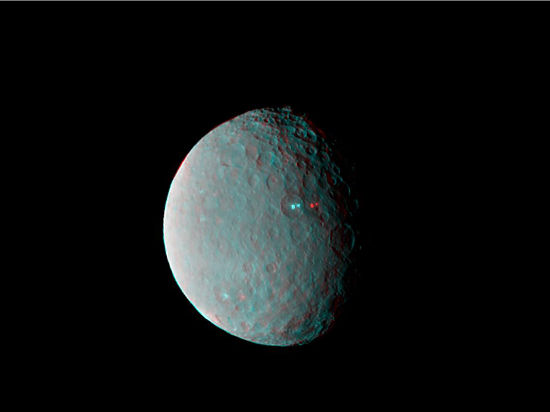Dawn probe went into Ceres orbit

Photo: NASA
Today, the Dawn probe has completed its nearly 8-year journey and entered the orbit of the dwarf planet Ceres . This is the first spacecraft to fly around the two bodies of the Solar System and the first to reach a dwarf planet and go into orbit around it. The first body that visited the probe was the West protoplanet. The actual confirmation of a successful exit in the control center will be accepted no earlier than the closest night UTC (or in the morning Moscow time).
The study of celestial bodies between the orbits of Mars and Jupiter will allow scientists to improve their understanding of the formation of the solar system. It was from such objects that the planets were created. The formation of another planet in the asteroid belt, according to scientists, was prevented by the gravitational effect of Jupiter.
This is exactly what Jim Green, NASA's director of planetary studies, explained the purpose of the study: “Studying Ceres will allow us to conduct historical research in space and open a window to the earliest chapters in the history of our Solar System. The findings will help make breakthroughs in understanding the principles of its formation. "
')
With the help of ionic engines, Dawn has been sneaking up to the dwarf planet for several months. The smooth approach to the orbit according to the plan must pass without any vivid effects or abrupt decelerations — simply the curve of the probe's motion ends with a circular orbit. Having received a confirmation signal from him, they will be able to state success in the control center.
But now the main part of the work of researchers, designed for 14 months, is just beginning. Surely we will see many more interesting photos, we get a variety of data. We will find out if there are water reserves on Ceres and we will get an explanation for the presence of incomprehensible bright points on the surface of a dwarf planet.
Update: Researchers at the NASA control center have confirmed the receipt of the signal from the probe. The probe went into orbit as planned. The next two weeks, the probe will go to the calculated height of the orbit, from which measurements will then begin.
Source: https://habr.com/ru/post/377219/
All Articles